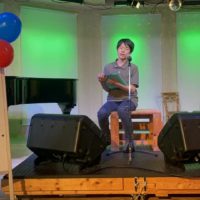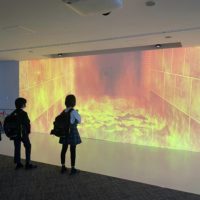Middle School


As the world changes, students are required to become confident and adaptable individuals in order to realizing their own potential and position in the global community. SIS Middle School, fosters independence and learning with the aim of developing an inquisitive growth mindset.
There are many models of bilingual programs that have specific objectives and the characteristics of the student body. At Shonan International School, we utilize a Two Way Dual-Language Approach to a second language instruction. This means that English and Japanese are the vehicles which all content is delivered.
Students to be social, culturally and linguistically adaptable in a global setting
Students to achieve competence in their first and second language (listening, speaking, reading and writing)
Students are able to apply higher thinking skills in both Japanese and English
Students to acquire the same English Language skills as students attending English only schools
To gain a greater understanding and appreciation for the Japanese culture
Early language immersion improves overall academic achievement, enhancing brain development, memory, and cognitive learning. Many studies have proven that bilingual students outperform monolingual students on standardized tests.
Scientific research has also shown that foreign language learning increases social
development such as communication and listening skills.
Bilingualism promotes awareness, appreciation, and acceptance of other peoples and cultures. Dual language speakers become more flexible thinkers and exhibit greater nonverbal problem-solving abilities.
The student becomes more aware of their own heritage, native language and offers a fresh perspective towards their own identity.
Students are better prepared to fully function in a globalized society.
CLOSE
Social and Emotional It’s not enough to simply fill students’ brains with facts. A successful education demands that their character is developed as well. That’s where social and emotional learning (SEL) comes in. SEL is the process of helping students develops the skills to manage their emotions, resolve conflict nonviolently, and make responsible decisions. At Shonan International School, we weave SEL into all parts of the school culture- both in the classroom, in the playground and at home.
We believe that by having these social and emotional skills students not only can optimize their learning at school but also will be able to have healthy relationships with others and create positive images about themselves. The five competencies are detailed down below.
http://www.wcsddata.net/data-topics/sel/
At Shonan International School, parents and teachers work together in the process of maintaining a healthy social and emotional environment. Therefore, it is crucial for parents to implement positive parenting strategies while teachers utilize similar behavioral strategies at school.
Under the guidance of our Social and Emotional Coordinator, teachers and parents take part in effective workshops to understand effective strategies that adhere to the child’s current emotional and social development.
We believe that for a child to maintain a healthy personality, the child will need to master specific tasks according to his / her developmental stages.
Positive Reinforcement
We believe in positive reinforcement and encouragement in the learning process. In SIS, encouragement is a continuous process aimed at giving the child a sense of self-respect and accomplishment.
” A child needs encouragement like a plant needs sun and water” ~ Rudolph Dreikurs
CLOSE
Inquiry-Based learning is a student-directed learning that believes that education begins with the curiosity of the learner. It is an approach to learning whereby students find and use a variety of sources of information and ideas to increase their understanding of a problem, topic, or issue.
At Shonan International School, we are committed to providing learning opportunities that espouse investigation, exploration, research, pursuit, and study upon all areas of subject content.
The school culture is based on the idea that the responsibility of learning is given to the students. Therefore the role of the teacher is not to dispense knowledge and make decisions for the students. The students are expected to collaborate and cooperate with one another to construct meaningful connection towards their learning. As a 21st century skill, it is vital for students to take ownership of their learning. Here is a visual image that describes how learning takes place in an inquiry based learning versus a conventional learning environment.
Why Teach Inquiry?
Research shows that active learning is a powerful tool. The benefits for students is the development of abilities that are crucial for learners such as, critical thinking, teamwork and informational literacy. It encourages learners to be self-directed which is a significant skill that students will need to acquire to be successful in the 21st century. Inquiry-Based Learning can improve students´ enthusiasm and motivation for learning.
Classes are focused more on single subjects however, taught through inquiry with an international approach. This means that the emphasis is on the application of learned skills. Our classes are concept-based as the merits of concept-based classes allows real world learning to take place.
Conceptual learning focuses on the “big ideas” of a topic instead of single subject content. This means that the content is used to drive the students’ learning and allows them to make inferences and discover the principles behind the specific learning subject at hand.
CLOSE
CLOSE
| Grades | 6th Grade~8th Grade |
|---|---|
| Class Days | Monday through Friday |
| Class Times | Grades 6~8: 8:30~18:00 |
| Lunch | Choice of catering or home lunch |
| Academic Support | Additional academic support may be offered after school |
| Study Abroad Programs | Italy, Canada, Singapore |
| Summer Program | Every second to fourth week in August (may change according to year) |
| Spring Program | Offered |
| Requirements for Admission | Parent commitment to school mission, participation in monthly parent workshops, language environment in grade school years, social language (admission may be contingent on additional academic support prior to beginning classes at SIS) |
CLOSE

See more
At SIS, drama education plays a crucial role in the development

See more
Authors day is a day where we come together to

See more
Students are currently learning about how cities are using waste as source of renewable energy.
Please feel to contact us.